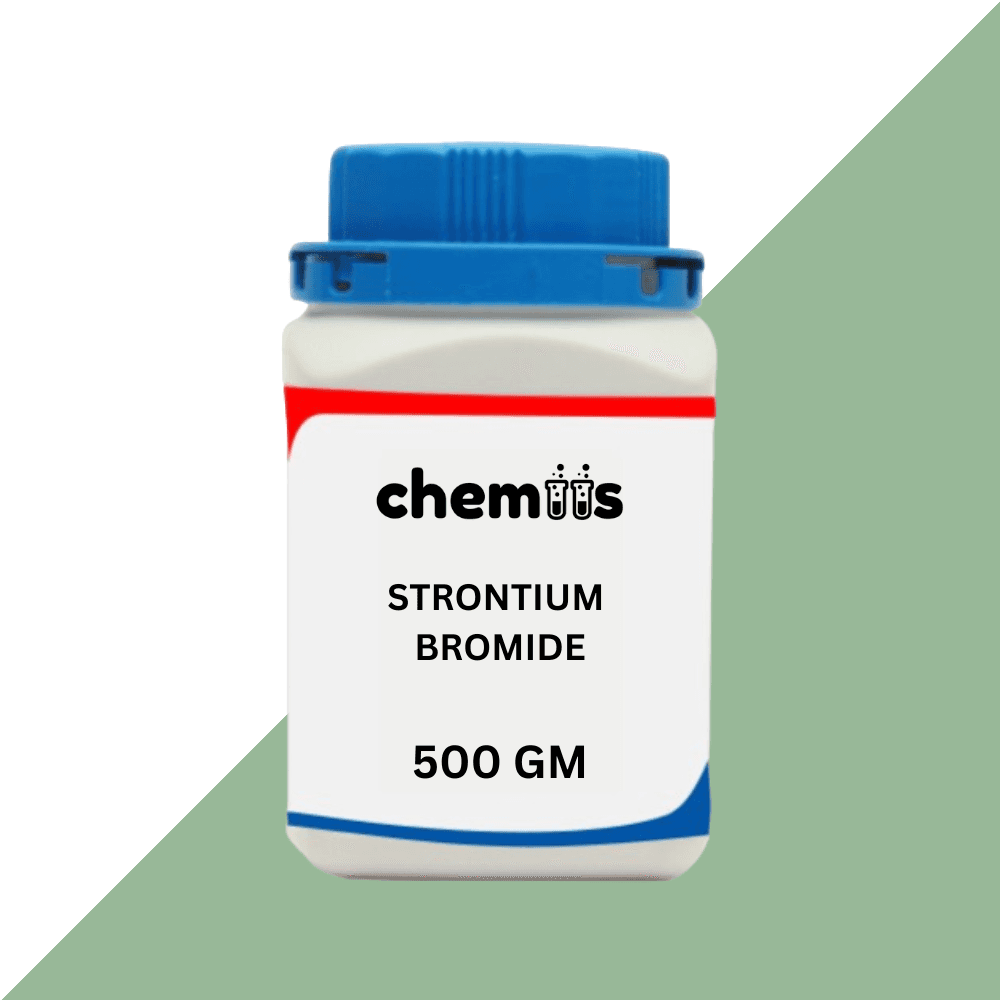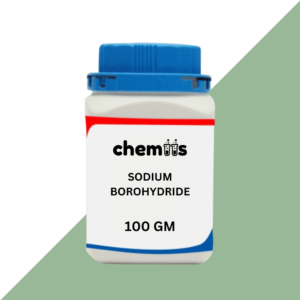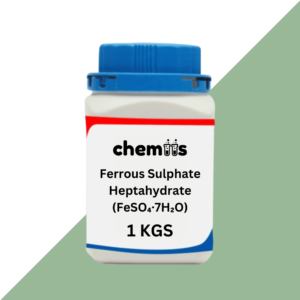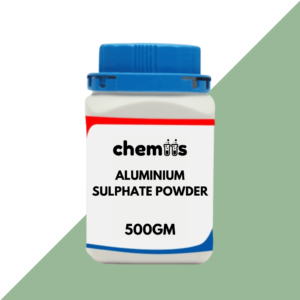Strontium Bromide is an inorganic compound composed of strontium and bromine. It appears as a white, odorless crystalline solid and is soluble in water. Strontium bromide is commonly used in various industrial, chemical, and pharmaceutical applications, particularly in the production of strontium-based compounds and in flame retardant formulations. It is also employed in pyrotechnics to produce red flames in fireworks and flares.
Applications:
1. Pharmaceutical Industry:
- Sedative and Relaxant: Strontium bromide has mild sedative properties and is sometimes used in pharmaceuticals, particularly as an ingredient in formulations intended for calming or relaxing effects. It has been historically used in the treatment of nervous system disorders, although its use in modern medicine is limited due to the availability of more effective alternatives.
- Radiopharmaceuticals: Strontium bromide can be used in the preparation of certain radiopharmaceuticals, particularly in medical treatments related to bone metastases, as strontium isotopes can be used in radiotherapy for targeted treatments of certain cancers.
2. Pyrotechnics:
- Flame Colorant: Strontium bromide is widely used in pyrotechnics for the production of red-colored flames in fireworks and flares. It is a key ingredient in firework compositions designed to produce vivid red hues when ignited.
- Flare Production: Strontium bromide is used in the manufacturing of flares and signaling devices, providing bright red flames that are visible from a great distance, making them useful in emergency signaling and military applications.
3. Chemical Manufacturing:
- Intermediate in Chemical Synthesis: Strontium bromide is used as an intermediate in the production of other strontium compounds, including strontium carbonate and strontium nitrate. These compounds have a wide range of industrial uses, including in the manufacture of magnets, ceramics, and glass.
- Catalysts: Strontium bromide is sometimes used in catalytic processes, particularly in the synthesis of other chemicals or as a precursor in the production of various strontium salts.
4. Analytical Chemistry:
- Precipitation Agent: Strontium bromide is used in analytical chemistry, especially for gravimetric analysis where it is used to precipitate certain substances from a solution. It is sometimes employed in the preparation of solutions for laboratory-based analysis.
- Fluorescence and Spectroscopy: Strontium bromide is used in the study of fluorescence and in spectroscopy experiments due to its distinct optical properties. It may also be used as a standard reference in certain types of spectroscopic work.
5. Water Treatment:
- Corrosion Inhibition: Strontium bromide is sometimes used in water treatment processes, especially for controlling scale formation in industrial water systems and acting as a corrosion inhibitor. It helps prevent damage to pipes and machinery by minimizing the buildup of harmful deposits.
Safety Guidelines:
- Personal Protective Equipment (PPE):
- Skin Protection: Strontium bromide is generally not highly toxic, but direct skin contact should be avoided. Wear gloves and protective clothing when handling strontium bromide in powder or bulk form to prevent skin irritation.
- Eye Protection: Safety goggles or face shields should be worn to prevent accidental eye contact, especially in industrial or laboratory settings where dust or splashes may occur.
- Respiratory Protection: When handling strontium bromide powder or when working in environments with airborne dust, use a dust mask or respirator to avoid inhaling particles. Proper ventilation should be in place.
- Storage:
- Store strontium bromide in a cool, dry place away from heat sources, direct sunlight, and incompatible materials such as strong acids or oxidizing agents.
- Containers should be tightly sealed to prevent contamination and moisture absorption, which could degrade the material over time.
- Handling:
- Avoid creating dust when handling strontium bromide, as inhaling dust can irritate the respiratory system. Use appropriate ventilation systems and work in well-ventilated areas, especially when handling large amounts.
- Always follow proper protocols for safe chemical handling and ensure the area is equipped with the necessary safety equipment (e.g., eyewash stations, fire extinguishers, etc.).
- First Aid:
- Inhalation: If inhaled, remove the person to fresh air immediately. If any difficulty breathing occurs, seek medical attention promptly.
- Skin Contact: If strontium bromide comes into contact with the skin, wash the affected area thoroughly with soap and water. If irritation develops, seek medical attention.
- Eye Contact: In case of eye contact, rinse immediately with plenty of water for at least 15 minutes. If irritation persists or the material is not removed, seek medical attention.
- Ingestion: If ingested, rinse the mouth with water immediately. Do not induce vomiting unless advised by medical personnel. Seek medical attention immediately.
- Disposal:
- Dispose of strontium bromide in accordance with local environmental and safety regulations. For large quantities, it should be disposed of by a licensed chemical waste disposal service.
- For small amounts, strontium bromide can typically be disposed of as regular chemical waste, but local disposal guidelines should always be followed.








Kusum Lata (verified owner) –
Arrived earlier than expected.
Harshit Reddy (verified owner) –
Genuine products.
Ishaan Nayak (verified owner) –
Product arrived on time.
Aditya Rawat (verified owner) –
Good quantity at good price.
Fatima Noor (verified owner) –
Good quantity at good price.
Siddharth Dasgupta (verified owner) –
Good quality.
Alka Dey (verified owner) –
Efficient and reliable.
Ayesha Rizvi (verified owner) –
Fast response to queries.
Rajeev Bhagat (verified owner) –
Clean and clear instructions.
Tanvi Purohit (verified owner) –
Clear product details.